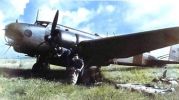
FIAT BR.20 "Cicogna"561 viewsThe Fiat BR.20 Cicogna was the standard Italian bomber of the mid to late 1930's, but it proved to be already obsolete during the French campaign during Italy's entry into World War Two. This bomber was first proposed by Celestino Rosatelli , who envisioned a standardized bomber, in 1934. The two engine BR.20 was first flown on 10 February 1936 at Torino Alitalia and the first 20 units were delivered on 26 November 1937.
Although the aircraft looked realtively sleek and modern, it was already outclassed by other competitors. Nevertheless, a total of 234 BR.20's, 279 BR.20M's and 15 BR.20Bis were built. The BR.20M (Modified) and the BR.20Bis were unique to the original in the change of nose section and engines. These aircrafts were operated in Malta, Battle of Britain, Yugoslavia and the Balkans.
|
|

Fiat Cr-32 asso di bastoni648 viewsFiat Cr-32 asso di bastoni - Megapack 3 models 11 liveries on sale at:
http://www.icarusgold.com/cr32.htm
|
|
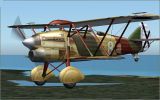
Fiat CR-32 Escuadrilla Blanco X Grupo de Caza Autonomo Baleari754 viewsFiat CR-32 Escuadrilla Blanco X Grupo de Caza Autonomo Baleari , one of the skins included with 3 models and 11 liveries on sale at:
http://www.icarusgold.com/cr32.htm
|
|
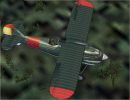
Fiat CR-32 belchite republican captured 1937690 viewsFiat CR-32 belchite republican captured 1937, one of the skins included with 3 models and 11 liveries on sale at:
http://www.icarusgold.com/cr32.htm
|
|
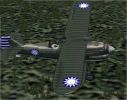
Fiat CR-32 Chinese Air Force724 viewsFiat CR-32 Chinese Air Force, one of the skins included with 3 models and 11 liveries on sale at:
http://www.icarusgold.com/cr32.htm
|
|
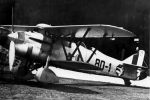
FIAT CR 32510 viewsEasily recognizable by its annular radiator and its closely cooled engine ,The C.R.32 "Freccia"(Arrow), was an excellent biplane fighter, being robust and fast. The C.R.32 was a single seat biplane fighter.The armament consisted of two 7.7mm Breda Safat machine guns (upgraded at 2 12.7 on later version) mounted on the side of the cooling radiator. Designed by Italian engineer Celestino Rosatelli, after first flew (in 1933),was built above in 1300 planes (including Spanish licensed production). In 1940, 300 planes were still in 1st line service.
|
|
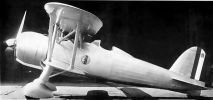
FIAT CR 42 falco533 viewsThe last of the biplane fighters, the Falco flew for the first time on 23 May 1938. It served on most fronts, first as a fighter, and quickly changed to ground support due to the inability of the aircraft to tackle modern allied aircraft. The Fiat CR42 was considered the most agile biplane fighter of WWII, and was certainly a hard target to hit, for the more modern but less maneuverable monoplanes. The Falco was lightly armed, as most of the fighters of it's time were, with 2 12.7mm Breda-SAFAT and still now holds the record of the fastest biplane (439 km/h) in WWII. At the time of El Alamein it was used as ground attack plane. The Falco finished its carreer as a night fighter defending Northern Italy.It was very nice to fly and very manouvrable, with a good pilot could even face the first series Hurricanes.
|
|
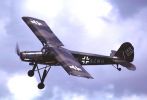
Fieseler Fi 156 Storch454 viewsThe Storch was first flown in 1936. The fabric-covered Storch observation monoplane served the German Forces throughout World War Two wherever the Germans saw combat. With ten times the life expectancy of the Bf 109 fighter, the Storch ("Stork") proved to be a rugged Short Take Off and Landing (STOL) airplane that gained the respect of all its pilots. Over 2,900 Fi 156s were produced. Today, more than 30 Fi 156s and their brethren have survived in Europe and North America, and about 20 are still capable of flying today.
|
|
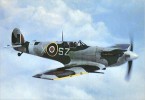
Supermarine Spitfire Mk Vb1059 viewsThe Mk V was produced in greater numbers than any other single mark of Spitfire. It was the main version of the fighter during 1941, replacing the Mk I and II in service in time to take part in the first British counterattacks over France. During the summer of 1941 it held an advantage over the Bf 109, but in September 1941 the Fw 190 made its operation debut, and the Mk V found itself outclassed. Despite this, it remained the main RAF fighter until the summer of 1942, and the low level LF.Mk V remained in use into 1944.
|
|
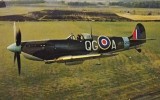
VICKERS ARMSTRONG SUPERMARINE SPITFIRE Mk 1A542 viewsSingle seat fighter powered by a Rolls Royce Merlin II or III liquid cooled in line engine. Maximum speed: 367mph. Armament: eight .303 machine guns. First deliveries to No. 19 Squadron Duxford, June 1938.
|
|
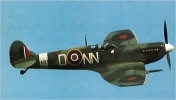
SUPERMARINE SPITFIRE Mk Vc554 viewsPossibly the most famous of all fighters, this particular aeroplane was re-activated to take part in the film "Battle of Britain" in which it flew nearly 50 hours. Now flying reularly at the Shuttleworth Collection.
|
|
|
|
|